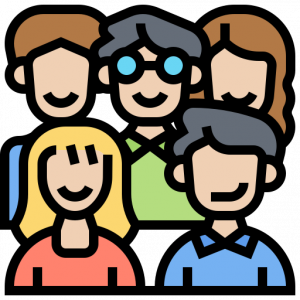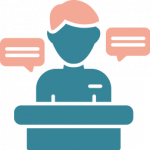Myofunctional Therapist
Candyce Brown
My journey into myofunctional therapy began with my own personal health challenges including depression, anxiety, dental decay (cavities), and chronic hiccups. Through research and self-discovery, I uncovered underlying orofacial myofunctional disorders that were contributing to my symptoms. This experience ignited my interest in helping others find the root cause of issues such as sleep-disordered breathing, TMJ dysfunction, orthodontic relapse, and other comorbidities often overlooked in traditional care.
Today, I specialize in using myofunctional therapy to empower individuals to reclaim their health by addressing oral and facial function. Whether you’re struggling with mouth breathing, upper body pain (neck pain, migraines), or sleep concerns, I’m here to help guide you toward lasting solutions through personalized care and evidence-based strategies.

What is an Orofacial Myofunctional Disorder (OMD)?
An orofacial myofunctional disorder occurs when an abnormal lip, jaw, or tongue position is present during rest, swallowing, or speech. Problems that result from OMDs may include pain in the face and neck, poor sleep due to breathing difficulties, or ongoing issues after dental surgery or orthodontic work.
CLICK ANY ICON BELOW FOR MORE INFORMATION

The Causes

Signs & Symptoms

Explain Therapy

The Benefits

Who Can Benefit?
Mission
The Mission
is to restore balance, function, and confidence by addressing the root causes of orofacial myofunctional disorders through compassionate, evidence-based care. I am dedicated to empowering individuals of all ages to breathe better, eat more comfortably, speak clearly, and achieve optimal oral and facial health. By collaborating with patients, families, and healthcare professionals, I strive to create personalized treatment plans that support proper growth, enhance quality of life, and promote lifelong wellness — one breath, one swallow, and one smile at a time.
Vission
The Vision
is to create a future where every individual enjoys optimal oral function, effortless breathing, confident speech, and harmonious facial development. I envision a world where early identification and treatment of orofacial myofunctional disorders are an integral part of healthcare — empowering people to thrive with improved health, enhanced quality of life, and radiant confidence. Through collaboration, innovation, and education,I aim to be a trusted leader in advancing the field of myofunctional therapy and transforming lives
Initial Screening
Online Screen – 15 Minutes.
Think of this as an easy, no-pressure introduction to myofunctional therapy — a chance to explore your concerns, get answers, and see if this journey is right for you. It’s free, helpful, and designed to give you a clear starting point before committing to a full evaluation. We’ll connect by phone or online to discuss your symptoms, concerns, and goals in a relaxed and informative setting.
Clarity & Understanding:
🧠 You’ll gain insight into what may be contributing to your challenges with breathing, swallowing, speech, or oral habits.
Guidance on Next Steps:
🔍 We’ll answer your initial questions and outline how myofunctional therapy might benefit you or your child.
No Obligation:
🤝This complimentary screening is open to everyone and completely optional — you’re welcome to schedule a comprehensive exam without it, though many find it a helpful first step.
Improved restful sleep

Oral Health And Breathing

